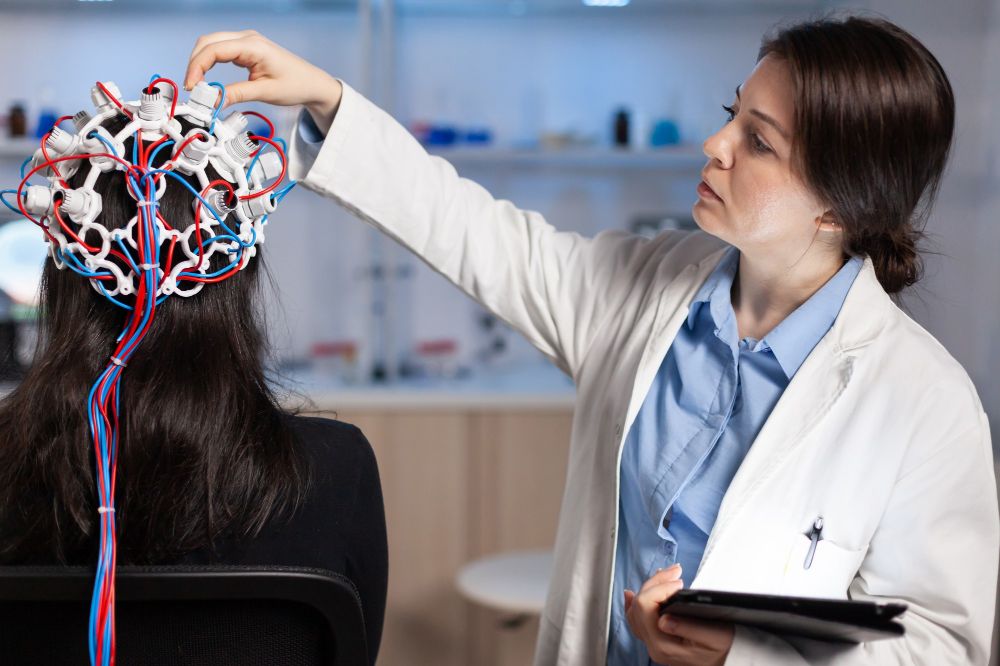Let’s understand Glioblastoma (GBM) it stands as a formidable adversary in the realm of oncology characterized by its aggressive nature and limited treatment options. Amidst the complexities of glioblastoma prognosis, the role of the MGMT gene emerges as a pivotal factor influencing treatment response and patient outcomes.
Table of Contents:
- Understanding Glioblastoma
- Deciphering the Role of the MGMT Gene
- Real-Life Examples of Glioblastoma Progress (with Cautions)
- Latest Research and Glioblastoma Promising Avenues
- Pioneers in the Fight Against GBM
- Resources for Further Exploration
Understanding Glioblastoma
Glioblastoma represents the deadliest form of brain tumor notorious for its rapid proliferation and invasive tendencies within the brain. Each year over 14000 individuals in the United States confront the daunting diagnosis of GBM with a five-year survival rate barely surpassing 6.9% [National Brain Tumor Society]. Despite advances in medical science, the median survival post-diagnosis lingers between 12 to 18 months highlighting the urgent need for innovative treatment strategies [The Brain Tumour Charity].

Deciphering the Role of the MGMT Gene
At the forefront of GBM prognosis lies the MGMT gene a key player in DNA repair mechanisms. MGMT stands for O6-methylguanine-DNA methyltransferase an enzyme crucial for rectifying DNA damage caused by various factors including radiation exposure. The MGMT methylation status refers to whether the MGMT gene is “on” or “off.”
- Unmethylated MGMT: This status implies that the gene is “turned off” resulting in reduced MGMT enzyme levels for DNA repair.
- Methylated MGMT: Conversely the gene being “turned on” translates to higher levels of MGMT enzyme available for DNA repair.
Real-Life Examples of Glioblastoma Progress (with Cautions)
Glioblastoma Treatment: The MGMT methylation status plays a critical role in the treatment of GBM influencing therapeutic decisions and treatment outcomes.
1: For patients with methylated MGMT: Temozolomide an alkylating chemotherapy drug demonstrates enhanced efficacy. The presence of methylated MGMT renders tumor cells more susceptible to temozolomide-induced DNA damage thereby improving treatment response. However, temozolomide can cause side effects like nausea fatigue, and increased risk of infection.
2: For patients with unmethylated MGMT: Temozolomide may exhibit limited effectiveness prompting clinicians to explore alternative treatment modalities such as radiation therapy. However, these alternatives also come with their own set of side effects including fatigue and skin irritation.
Important Note: Treatment decisions for complex conditions like glioblastoma involve multidisciplinary considerations and should always be guided by medical professionals.
Latest Research and Glioblastoma Promising Avenues
The relentless pursuit of novel therapies for GBM encompasses various promising avenues including:
- Immunotherapy: Leveraging the body’s immune system to target and destroy cancer cells shows promise in clinical trials offering potential improvements in treatment outcomes [National Cancer Institute].
- Gene Therapy: Harnessing genetic modifications to target GBM represents a frontier in precision medicine offering tailored interventions tailored to individual tumor profiles [National Cancer Institute].
- Targeted Therapies: Precision medicine approaches targeting specific molecular aberrations within cancer cells offer the potential for enhanced treatment efficacy and reduced toxicity [American Brain Tumor Association].
Pioneers in the Fight Against GBM
Numerous organizations and institutions are dedicated to GBM research and advocacy:
- National Cancer Institute (NCI): Leads and funds research efforts related to all cancers including GBM [National Cancer Institute].
- American Brain Tumor Association (ABTA): Funds research provides patient support and advocates for increased research funding [American Brain Tumor Association].
- The Brain Tumour Charity: UK-based charity that funds research raises awareness and offers support for brain tumor patients [The Brain Tumour Charity].
Resources for Further Exploration
For individuals seeking information, support, or opportunities to contribute to GBM research and advocacy, the following resources are invaluable:
Click Here:
Conclusion:
In conclusion, the journey to combat GBM is multifaceted driven by the collective efforts of researchers healthcare professionals advocacy groups, and patients. While challenges abound the convergence of scientific innovation and compassionate care offers hope for improved outcomes and a brighter future in the fight against glioblastoma.











